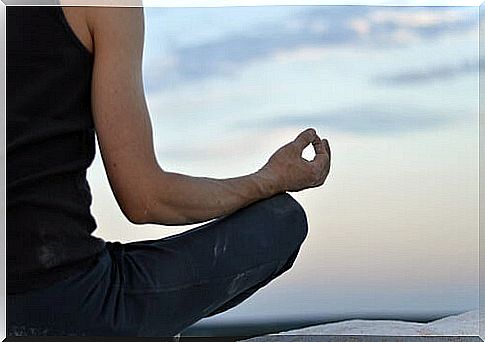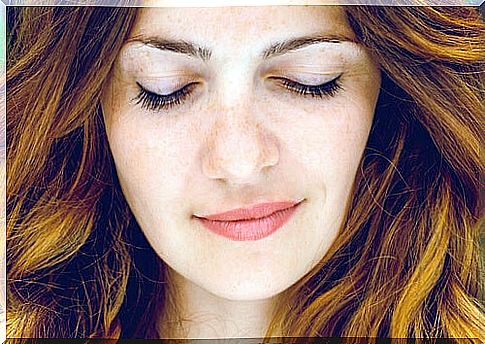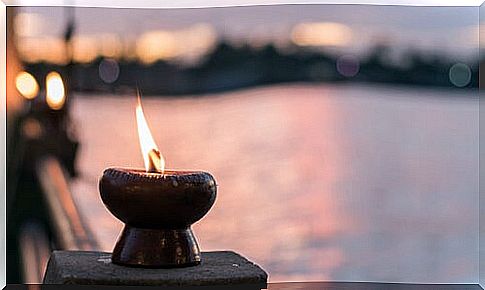Benefits Of A 10-day Silent Retreat

I could write dozens of articles on the benefits of a 10-day silent retreat. I could record hours and hours talking about what a spiritual retreat brings. So many things could be said … but I will only say a few. I will show those that can be shared, because a great majority are personal and individual. They are experiences so deep and ineffable that no matter how many words we use, they are impossible to convey. In addition, apart from the impossibility of transmission through the oral or written medium, they belong to the internal sphere, of the private.
When I made my first 7-day retreat two years ago, one of the first impulses when leaving was to share the experience. At that moment, I realized that not everyone is ready to understand what can be a transformative experience for some. Since then I don’t talk about it much unless asked, or I do it very superficially. In fact, when I came out of my last retreat, one of the first things they asked me was: “ten days without talking to anyone and without using the mobile phone?”, “Yes”, I answered, “how strange you are”, they answered.
What is a withdrawal?
A retirement basically consists of withdrawing from life. Said like that it sounds a bit bleak. Let’s explain it better.
On a day-to-day basis, we encounter situations that provoke us anger, as well as people that irritate us. We face events that sadden us. In short, we must face more or less continuously situations that create discomfort. On the other hand, we are also victims of addictions, which in a serious extreme could be classified as addictions.
Therefore, a retreat consists of temporarily withdrawing from what causes us both discomfort and excessive attachment to learn to be with ourselves. In this case, through the teachings of a highly qualified teacher who guides and establishes certain guidelines to follow.

The first moments
Being my third retreat I already had some experience, however, the first moments are always different. Also, this retreat consisted of the end of the course to be an instructor in Buddhist meditation, so I felt a great responsibility.
Between one retreat and another, life has continued to pass and we have continued to accumulate experience. When you walk through the door of the retreat center you know that, despite being accompanied by more retirees, you will be alone with your mind. No mobile, no computer, no internet, no contact with the outside.
In our day to day we constantly evade our most uncomfortable thoughts. We do not tolerate thinking about what causes us pain and that is why we always resort to mobile phones or any other activity to distract ourselves. In a retreat you are alone in the face of danger: your mind and your thoughts.
Meditation and thoughts in a silent retreat
Meditation
As it was a silent retreat at the end of the Tibetan Meditation Instructor course, we meditated between 5 or 6 times a day as a practice, plus the individual meditations that each one wanted to do. We also received teachings. This was our only auditory stimulus, the teacher’s words a few hours a day. Otherwise, silence.
As you meditate, you become aware of the number of thoughts that come to your mind over and over again. Thoughts that you thought were overcome and others more current. Some linger in your mind like a dagger in the back. You sit cross-legged, breathe deep and slow, and let the thought pass. You watch it without judging it. However, when you finish the meditation, come back again.
Thoughts
Those thoughts that we seemed to have under control begin to emerge, to emerge like lava from a volcano completely out of control. The tip of a thought appears and we hide it from day to day by going to the internet.
In retirement, not only does the tip of the iceberg appear, but it begins to emerge and little by little you see its size: enormous! You realize that many thoughts are like the iceberg that sank the Titanic, on the outside you think that they do not affect you so much while they are surreptitiously hurting you in such a way that, little by little, they are sinking your emotional health, your mood, your self esteem… Congratulations, you are starting to face your own demons!

That is why it is not difficult, that despite seeming all idyllic, they can occur between withdrawing attacks of anxiety, tremors, sweats, the urge to cry, palpitations, hyperventilation, etc. These symptoms are by no means described to scare, but quite the opposite, so that we know everything that happens when we really face our mind, so that we know how much we hide from ourselves. And when we have to face it, we don’t even know where to start.
In some ways, this anxiety could also be explained as a withdrawal syndrome from everyday life. We are used to a certain routine, to go from here to there, but in a retreat center you have a set schedule. You can’t access technology, you can’t get out of your room in the middle of the night and go to your fridge for ice cream. They are changes that we must suppress to adopt a different schedule and behavior, and this can cause some discomfort. In addition, as it is a silent retreat, we cannot speak either. Everything is different.
But… what are the benefits of a 10-day silent retreat?
So far everything looks a bit regular, but having a few days emotionally low depends on each person, their life history, their ability to cope and their degree of involvement with meditative practice.
The funny thing about it is that the benefits of the silent retreat do not really begin to be felt until you return to daily life. Being there you feel tranquility, serenity. Even if you’ve been emotionally upset for a few days, everything returns to normal. The mind is much calmer, you don’t need to talk, you don’t need so much external stimulation to be happy. You are enough with yourself and little else.
You leave the retreat center on the way home and the surrounding noise begins to invade you: cars, people talking, people shouting, blows … You begin to be aware of the excessive noise by which we are involved and that causes us a state of stress almost dramatically unconscious. Those who live alone have that advantage, but when you live with more people at home you notice that one has the TV on, another with the computer, another with the mobile and almost everyone is watching things that really do not contribute anything and with an excessive volume.
When you start to interact with your people again, you realize that a large part of the conversations are purely social, that is, to fill in the gap, that they neither contribute nor enrich you. Which is not to say that it is negative, it is not a negative criticism, but rather a reflection. We talked a bit about the country, about friends, about sports, but… have we improved as a person? After ten intense days dedicated to inner development, you become aware of the amount of superfluous information that is used just for talking.
You learn to appreciate the simple, the simple, that which really gives value to our lives. When you visit a mall you only see opulence, consumerism and materialism. We open our eyes and realize that since childhood we have only been taught to seek happiness externally, but that it is really within us, only that they do not teach us to cultivate it.
Cave, valley and cemetery phase
The issue of returning to the day to day is an important aspect, since many can become obsessed with talking only about what helps them in their inner development, however, the ideal is to achieve balance. Do not neglect our friends or our family, but also do not neglect, for example, our meditative practices.
Lama Rinchen Gyaltsen led the meditation training course and always talked about the three phases of the spiritual path:
- Cave phase.
- Valley phase.
- Cemetery phase.
The first phase consists of withdrawing from everything that negatively affects you or creates attachment and preparing yourself. It is a mental training.
When we believe that we are ready we go down to the valley to “deal” with the day to day and see to what extent we have evolved.
Finally, the graveyard phase would already be a bit out of date. Formerly in India, cemeteries were places where you could see rotten bodies. So it was said that if a meditator was able to meditate in a graveyard, his level of evolution was really high.
Fortunately, we do not need to go to a cemetery to meditate and if we want to do so, nowadays, at least in Spain, we do not find bodies in sight. We can go from the cave phase to the valley phase.
Many, when they come out of retirement, want everything to continue as calm as in the “cave”, but this is very difficult and unrealistic. Hundreds of stimuli bombard us every day and we have to face different situations and setbacks. But it is neither healthy nor healthy to be carried away by the insane and extremely materialistic maelstrom of the valley phase. So the ideal is to know how to interact with our environment, being able to maintain a certain calm and not neglect our personal practices.

Recommendations for a silent retreat
First of all it is advisable to start with a short withdrawal of 2 or 3 days. And above all, guided. The three retreats that I have done (7 days, 3 days and 10 days) have been guided. I started directly with a 7-day life-changing one, but for many people it can cause a degree of anxiety to begin with.
On the other hand, it is important to know the center, that is, look for references, try to meet people who have done one, consult the website, see who the teachers are … This information will give us guarantees about the center we go to.
Another important aspect is to know that not all retreats are silent. Many are meditative practices but do not require silence, although it is true that in some way, perhaps unconsciously, people tend to speak less. Now, it is essential to know that if we do a silent retreat we can feel anxiety and discomfort for a few days. It is a very normal phase. In this case, if we do not know how to take it, it is best to consult with the teacher and he will give us instructions to improve our situation. But above all we should not be scared.
Final comments
Many people tell me that they would never do a silent retreat. From here I would like to recommend the experience even if it is only a weekend. We spend a lot of money on whims, we spend a lot of time on empty tasks, so investing a little money and time in something as beneficial as inner development, what can be wrong?









